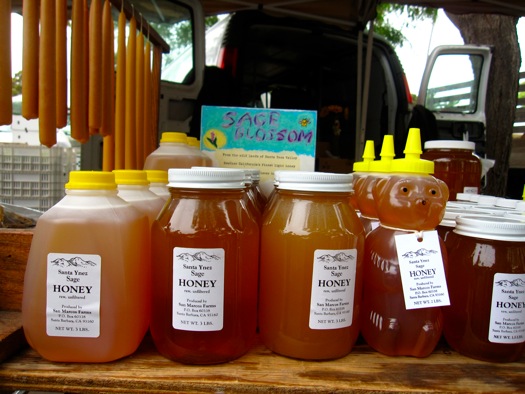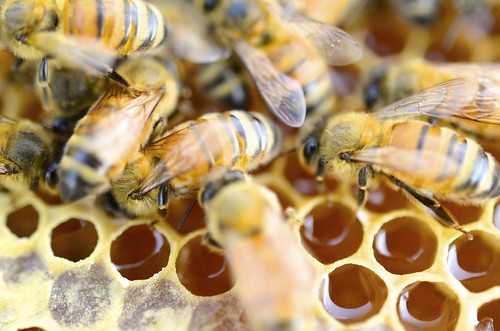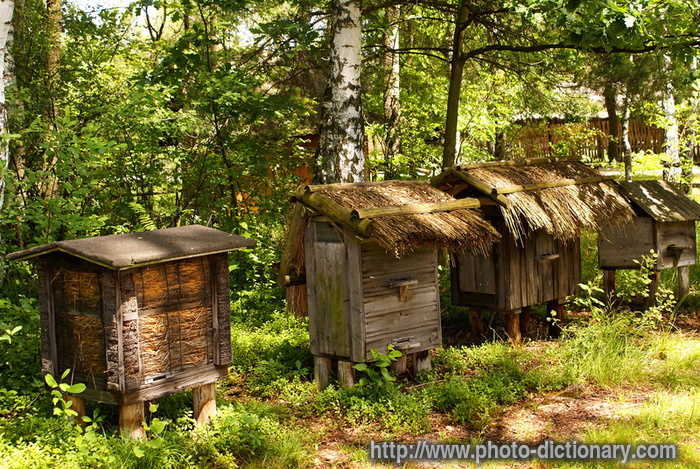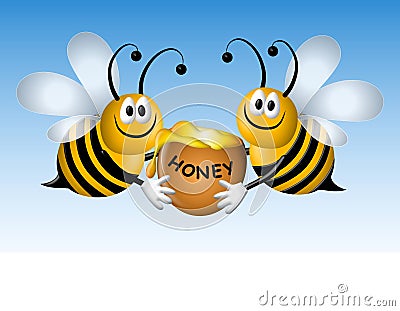Is there any difference between farther and further? Merriam-Webster’s online dictionary notes in a usage discussion that as an adverb, farther and further are used indiscriminately when literal or figurative distance is involved:
“How much farther do we have to go?”
“It’s just a mile further.”
“How much further do you want to take this argument?”
“I’ve taken it farther than I want to already.”
However, in adjectival form, a distinction has developed regarding use in these senses:
“My house is the farther of the two.”
“She needs no further introduction.”
But dictionaries are descriptive; they describe not how people should use language, but how they do use it. However, language maven (and therefore prescriptive) Bryan A. Garner, in Garner’s Modern English Usage, advises, “In the best usage, farther refers to physical distances, further to figurative distances,” and I agree: Popular usage demonstrates just that — popular usage — and the careful writer maintains distinctions that enrich the language. (Write eager when you mean eager, for example, and anxious when you mean anxious.)
Farthest and furthest, by extension, should maintain the same distinct meanings; use these forms in favor of the burdensome farthermost and furthermost. Furthering and furtherance are interchangeable noun forms that serve as synonyms for promotion or advocacy; there is no equivalent noun form for farther.
Further is also employed as a modifier, as in
“Further, I see no reason to delay the proceedings”
Furthermore is a variant. Farther, however, does not fit this role.
Farther and further both mean at a greater distance, and they are used interchangeably in this sense. In the United States, though, farther is more often used to refer to physical distances, and further more often refers to figurative and nonphysical distances. For example, we might say that one mountain is farther away than another, while we might say that the price of a stock (a nonphysical thing) fell further today than yesterday. This is not a rule, however, and further is often used for physical distances. The distinction does not exist in the U.K. and elsewhere in the (British) Commonwealth of Nations, where further is preferred for all senses of the word and farther is rare.
In Middle English, the word for at a greater distance was spelled several ways, including ferder, farthere, ferdre, and forther. Farther and further emerged as the prevalent spellings by the 16th century, and for several hundred years they shared their main definitions. In modern usage, however, they have diverged in meaning.
Further has senses it does not share with farther. It works as an adjective meaning additional—e.g., “I have no further questions.” It works as an adverb meaning additionally—e.g., “He said he did not spend the money, and stated further that he had never even received it.” And it works as a verb meaning to advance (something)—e.g., “This website is meant to further understanding of 21st-century English.” Farther is not used in these ways.
There are some examples here. Please, read them and try to understand.
Farther south, in Central Otago, there are some even harsher mountains … [Telegraph]
Making people park a little farther away will actually increase their exposure to danger, he added. [Red Wing Republican Eagle]
Pyzik said the testing cells would be located farther from the school than initially proposed. [Chicago Tribune]
The Dollar is extending its gains against the Euro. EUR/USD fell further to 1.3430, hitting a fresh daily low. [NASDAQ]
So the mechanism that was initially meant to be protective can become the source of further damage. [Indy Posted]
Reliable measurements of the Sun’s magnetic field are only available from 1900 onwards, so researchers used computer simulations for further back in time. [Daily Mail]
I have created this blog to help my students learn and improve their English. In this blog, they can find some interesting articles, grammar suggestions, exercises and assignments, pictures and videos. This blog will help students practice their speaking and listening, and do some grammar exercises.
Wednesday, December 12, 2012
Comparatives and Superlatives

Old - older,
expensive - more expensive
the oldest - the most expensive
Comparatives (with -er) and Superlatives (with -est)
clean - cleaner - (the) cleanest
We use -er and -est with the following adjectives:
1) adjectives with one syllable
| clean | cleaner | cleanest |
| new | newer | newest |
| cheap | cheaper | cheapest |
2) adjectives with two syllables and the following endings:
a) adjectives with two syllables, ending in -y
| dirty | dirtier | dirtiest |
| easy | easier | easiest |
| happy | happier | happiest |
| pretty | prettier | prettiest |
b) adjectives with two syllables, ending in -er
| clever cleverer cleverest |
c) adjectives with two syllables, ending in -le
| simple simpler simplest |
d) adjectives with two syllables, ending in -ow
| narrow | narrower | narrowest |

Spelling of the adjectives using the endings -er and -est
| large | larger | largest | (leave out the silent -e) |
big | bigger | biggest | (double the consonant after short vowel) |
| sad | sadder | saddest | |
dirty | dirtier | dirtiest | (change -y to -i if there is a consonant before -y) |
| shy | shyer | shyest | (here -y is not changed to -i) |
Comparison (with "more" and "most")
difficult more difficult (the) most difficult
(all adjectives with more than one syllable, except some adjectives with two syllables)

Irregular adjectives
| good | better | best | |
| bad | worse | worst | |
| much | more | most | |
| many | more | most | |
| little | less | least | |
| little | smaller | smallest |

Three syllable or more adjectives:
put "more" in front
expensive - more expensive
Two syllable adjectives not ending in -y:
put "more" in front
stupid - more stupid
Two syllable adjectives ending in -y:
replace the -y by -ier
happy - happier
One syllable adjectives ending in one vowel and one consonant:
double the consonant and add -er
big - bigger
Other one syllable adjectives:
add -er
tall - taller
Exceptions
good - better
bad - worse
far - further / farther
old - older / elder
little - less

With a few exceptions, adverbs normally add "more"
slowly - more slowly
easily - more easily
These are the exceptions:
early - earlier
late - later
fast - faster
hard - harder
near - nearer
soon - sooner
Exercise 1
Exercise 2
Exercise 3
Exercise 4
Exercise 5

I HOPE YOU DID!
Wednesday, November 21, 2012
Too much, too many; enough with noun; enough with adjective; so and very
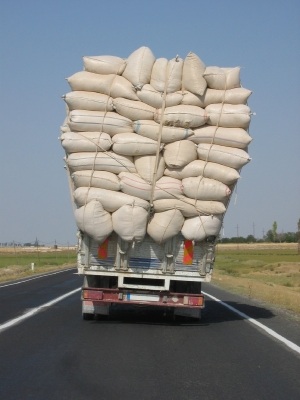
Dear students,
Yesterday we spent a lot of time to learn about Too Much, Too many, Adjective + Enough and Enough + Noun. Today I'd like you to practice some more.
Irena
Please, read these and pay attention to the bold words and phrases. Here are some examples of what we learned yesterday.
(To make it bigger, click on the picture)
Have you ever eaten too much food?
What age is old enough to serve in the military?
What age is old enough to buy cigarettes and alcohol?
Is the Korean government’s age limits too low or too high?
Have you ever felt like you were not smart enough to do something?
Have you ever felt like you were too smart to do something?
How much is too much money? Is it possible to have too much money?
Do you think designer brand name products are too expensive? (Gucci, Armani, etc.)
How about brand name products, are they too expensive? (Samsung, Sony, etc.)
Do you think that your country’s big corporations are too big, big enough, or not big enough?
Have you ever been too afraid to do something?
Do you get enough exercise?
Do you exercise enough?
Many people think that they never have enough stuff.
(To make it bigger, click on the picture)
So, if you remember, we use:
too + adjective (too slow, too fast, too tall, too short)
too + adverb (too bad)
too much + noun (too much money, too much time)
too many + noun (too many friends, too many problems)
adjective + enough (old enough, rich enough, smart enough)
adverb + enough (well enough, fast enough, hard enough)
enough + noun (enough time, enough money, enough friends)
Here is an additional explanation:
1. We use too to mean more (less) than is good, sufficient, normal or more (less) than necessary. IT shows that there is a problem.
o It's too late to stop him.
o Jerry was too young to watch the movie.
o There are too many people on this train, there's nowhere to sit.
o You have too much money, give some to me.
o You've eaten too many of those cakes.
2. We use enough in positive sentences to mean sufficient, normal or good.
o Your clothes are big enough to fit me.
o You've done enough work. You can stop now.
o Have you got enough money to buy me a drink?
3. We use enough in negative sentences to mean less than sufficient or less than necessary.
o You're not working fast enough, you won't finish on time.
o Sorry, I haven't got enough food for everyone.
Here is some additional information:
1. We can use enough without a noun if the meaning is clear.
o There's a lot of food but not enough for everyone.
2. We can replace enough with the before a noun.
o I don't have enough money to go on holiday.
o I don't have the money to go on holiday.
o His company doesn't have enough resources to do the job.
o His company doesn't have the resources to do the job.
Now, let's talk about too and very a little bit.
First, watch this video, please and try to understand the difference between very and too.
If you still don't understand, here is another video for you.
Look at the two sentences. How are they different?
A: It is very hot.
B: It is too hot.
A is a simple statement- It's HOT!
B has a negative feeling and shows some difficulty. Maybe because it is so hot, I feel terrible. Or because it is so hot, no one is happy. Too shows that there is a problem.
Here are some more...
C: Bob is very tall.
D: Bob is too tall.
C is a simple statement. Wow! Bob is a tall boy. This is good because he can play basketball.
D has a negative feeling. Perhaps because Bob is tall, he hits his head on the ceiling. Or maybe he is so tall, he can't get a date or has no friends.
So remember, using too shows that there is a problem with the situation.
Choose very or too. Check your answers below:1. I think James is nice. Karen thinks James is nice, too.James is ___ nice.very too 2. It's cold outside. I hate it. I might become sick if I go out. It's ___ cold outside.very too 3. That box is so big. I can't pick it up. That box is ___ big.very too 4. Tony's cat is fat. It weighs 8 kg. Tony's cat is ___ fat.very too 5. Tony's cat is fat. It can't run. It may not live a long time. Tony's cat is ___ fat.very too |
Answers:
1 - very
2 - too
3 - too
4 - very
5 - too
Now let's talk about so. It is different from very. How can you know where to use so and where to use very? Look at the examples here and try to understand.
So is used with “that” to add extra information or show an extreme result or actions that lead to certain results. The "that" is usually optional.
Last night I was very tired.
Last night I was so tired that I almost fell asleep while driving.
Last night I was so tired that I almost fell asleep while driving.
This book is very interesting.
This book is so interesting that I stayed up until midnight reading it!
This book is so interesting that I stayed up until midnight reading it!
She plays the piano very well.
She plays the piano so well that people often ask if she’s a professional.
She spoke so quickly that I couldn't understand her.
She spoke so quickly I couldn't understand her.
He paints so well that they offered him a scholarship at an art school in Paris.
He paints so well they offered him a scholarship at an art school in Paris.
She plays the piano so well that people often ask if she’s a professional.
She spoke so quickly that I couldn't understand her.
She spoke so quickly I couldn't understand her.
He paints so well that they offered him a scholarship at an art school in Paris.
He paints so well they offered him a scholarship at an art school in Paris.
We also use so + adjective or so +adverb. So can be combined with adjectives to show extremes (a larger degree). We often use this form with an exclamation mark.
The music is so loud! I wish they would turn it down. (so + adjective)
The meal was so good! It was worth the money. (so + adjective)
She spoke so quickly! She sounded like an auctioneer. (so + adverb)
He paints so well! I am sure he is going to become a famous artist. (so + adverb)
Here is a video about the difference between so and very. Please, watch it.The meal was so good! It was worth the money. (so + adjective)
She spoke so quickly! She sounded like an auctioneer. (so + adverb)
He paints so well! I am sure he is going to become a famous artist. (so + adverb)
I hope, you remember everything, so now, please, do some exercises:
Exercise 1
Exercise 2
Exercise 3
Exercise 5
Exercise 6
Exercise 7
Exercise 8
Here is a quiz for you. Try to answer the questions:
START
Please, also do this exercise:
Exercise
I hope you understand the grammar. Here is the summary. Please, click on the picture to make it bigger.
Good luck to you!


Wednesday, October 3, 2012
Bees and Honey
Dear students,
Yesterday you read the article about honey. I hope you understood and remembered some important information about honey. Today I'm giving you some more information about honey and honey bees. Please, read the following article. There are some new words in this article, but don't get scared. Try to understand the meaning of each paragraph and the whole article. Then, you can look the new words up in a dictionary.
Good luck to you!
Irena
Paintings of beekeepers lining the walls of a cave in Spain prove that we have been practicing the art of beekeeping for at least 7,000 years. Honey is versatile (it means "variable", "many-sided" and "various"). It has been prized as a sweetener, as medicine, as an offering for the gods, as currency, and as a symbol of love. In Greek mythology, for example, Cupid dips his arrows in honey before aiming them at our hearts.

According to ancient people and the system of Indian traditional medicine, honey is the nectar of life. Because it is created from the essence of a flower’s sex organs, it has a natural affinity with reproductive tissue. It can also heal sore throats, colds, coughs, ulcers, burns, and wounds. And when ingested with a healing herb, honey travels to the deepest tissues, transporting the chemical properties and the subtle energies of medicine to the cellular level.
Indian traditional medicine says that raw honey is medicine, but cooked honey is a slow poison. Why? In its natural form, honey is rich in minerals, vitamins, enzymes, amino acids, and carbohydrates. But heat strips honey of most of its nutritional value and transforms the honey molecules into a non-homogenized glue that adheres to mucous membranes and clogs subtle energy channels. Cooked honey creates cellular toxicity and may lead to immunological dysfunction. It can also clog the arteries and lead to atherosclerosis (thickening of the arteries), hampering blood flow to the vital organs. So as a general rule, honey should never be cooked, and nothing should be cooked with honey. Instead, add raw honey to yogurt, warm tea, or spread it on bread or toast.
These days, most honey sold commercially has been heated and should be avoided. Look for the words “raw” or “unpasteurized” on honey at a health-food store or online.
The purest form of honey is local and raw because it helps prevent (or calm) seasonal allergies and is full of energy. Check your local farmers’ market,
and if you live in the country, keep an eye out for roadside honey
stands.
There are some suggestions about honey as remedy. Here arte some of them. Watch the videos.
14 Ways Honey Can Heal
For obesity, high blood pressure, and/or high cholesterol,
drink a cup of hot water with a teaspoon of honey and 5 to 10 drops of
apple cider vinegar early in the morning daily. (Ayurvedic texts say
honey scrapes fat and cholesterol from the body’s tissues.)
To relieve rheumatoid arthritis symptoms, take 1 teaspoon of honey with 200 mg powdered guggulu (that's a plant) daily.To heal oral ulcers, apply 1 teaspoon honey and a pinch of turmeric to canker sores, mouth ulcers, or sores on the tongue. This mixture will generate saliva and draw out toxins; spit it out to speed the healing process. For internal ulcers, mix a cup of warm milk with a teaspoon of honey twice daily.
To heal a wound, dress it daily with sterilized gauze brushed with honey; dispose at night.
For the common cold, mix 1/2 teaspoon cinnamon with 1 teaspoon honey and eat two or three times a day.
To clear your sinuses, take a mixture of 1 teaspoon each of fresh ginger juice and honey two or three times a day.
For asthma, eat a mixture made of 1/2 teaspoon bay leaf powder, 1/4 teaspoon pippali (it's a plant), and 1 teaspoon of honey two or three times daily.
For nausea, vomiting, and/or indigestion, mix one part lemon juice with one part honey. Dip your index finger into this mixture and lick it slowly twice daily.
For anxiety, drink 1 cup of orange juice with 1 teaspoon of honey and a pinch of nutmeg powder twice daily.
To help reduce the craving for cigarettes, chew small pieces of pineapple with 1/2 teaspoon of honey before smoking.
For abdominal pain, take a mixture of 1/4 teaspoon ground bay leaf, 1/4 teaspoon ajwan (celery seeds), and 1 teaspoon of honey before lunch and dinner daily.
For chronic fever, make a tea of 1 teaspoon of holy basil (tulsi) and 1 cup of hot water. Add 1/4 teaspoon of black pepper powder and 1 teaspoon of honey. Take two or three times a day.
To aid poor circulation, mix 1 teaspoon cinnamon, 1/4 teaspoon trikatu, and 1 teaspoon honey in 1 cup of hot water. Steep for 10 minutes. Take twice a day.
To stop hiccups, mix 1 teaspoon honey and 1 teaspoon castor oil in a container. Dip your index finger into the mixture and lick it. Repeat every 10 minutes until your hiccups stop. (Hiccups are due to spasm of the diaphragm, and these ingredients in equal proportion are anti-spasmodic.)
Here are some more videos:
You might think that honey bees are important because they make honey – but that is not the only reason they matter so much in the agricultural world. The most important thing they do is pollinate plants. Countless crops, including cotton, lemons, nuts and even cauliflower, etc., are pollinated by the humble honey bee. Without such pollination the modern agricultural industry would be nothing. Agreed, plants which rely on the wind for pollination (e.g. some grasses, dandelions, etc) would continue to grow; but without the honey bee, pollination of things like strawberries, oranges, tomatoes, etc. would have to be carried out by some other means. In parts of China where insecticides have killed off the honey bee entirely, pollination is effected by hand. This, of course, is slow, costly and requires intensive labor.
Are bees suffering?
Apparently colonies of bees have been dying (or "collapsing") more and more in recent years. Colony Collapse Disorder (CCD) has been happening at such a rate that is has been dubbed "bee AIDS". In the winter of 2007-2008 nearly 30% of bee colonies in America collapsed. They were opened in the Spring, only to discover that only the queen bees and the eggs remained. The bees themselves were nowhere to be seen and it is assumed that they die elsewhere. This is strange because bees do not normally abandon a functioning hive at all, and because if they do abandon a hive the honey within is usually eaten by other bugs, such as beetles, etc. However, in cases of CCD such pests leave the hive and its honey alone and intact.
Why are bee colonies collapsing?
No one knows for sure but various theories have been put forward. Some suggest that it is a microbe called the Acute Paralysis Virus that is wiping out bee colonies. Others think it may be due to a parasite called the Varroa mite which feeds on blood. Another culprit could be a fungus which lives in the gut and is called Nosema Ceranae. Even the mobile phone has been blamed for causing CCD. It is thought that the bees' navigation system can be confused by emissions from mobile phones. In other words, maybe the bees just get lost. More credibly, pesticides such as insecticides have been held responsible for the decline in healthy apiaries.
What will happen if bees become extinct?
Bees are currently not on the endangered species list – there is some way to go before their population falls that low. However, the number of bee colonies in America has fallen from nearly 6 million 60 years ago, to approximately 2.5 million today. CCD has not reached Britain yet but the Varroa mite has. By the spring of 2007 a quarter of all bee colonies had died. It has been said (by Albert Einstein, no less) that "If bees disappeared completely, man would only be able to survive for another four years." Scientists hope that he was exaggerating.
Honey Bees
Now you understand the importance of bees and benefits of honey as remedy.
Subscribe to:
Posts (Atom)








